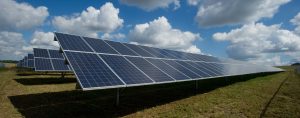Engineers play a critical role in making sustainability a part of everyday life. Sustainability calls for planning for the future when designing for the present. And environmental engineers have the knowledge and leadership to provide the direction needed to improve the quality of our environment and ensure its quality for generations to come.

Their work starts with ensuring potable water and clean air and extends to protecting the earth on which we farm and the oceans where we fish. Environmental engineers study pollution, as well as create methods for preventing it and lead appropriate recovery efforts. Meeting clean water supply needs, protecting public health, addressing the air pollution issues of acid rain, dealing with problems caused by global warming and reducing pollution, are among the challenges met by environmental engineers.
The American Society of Civil Engineers (ASCE) defines sustainability as a set of environmental, economic and social conditions, or “the Triple Bottom Line.” The public has the ability to maintain and improve quality of life indefinitely, without harming the quantity, quality or availability of natural, economic and social resources, noted ASCE. Environmental engineers not only know what materials are necessary for the safe completion of a job, but they also know what materials to select that are the most environmentally sound. That may mean suggesting materials that are not at risk of depletion or selecting a building site that is not a nesting place for endangered species, for example.
Civil engineers’ jobs are evolving. Environmental operating conditions are changing and people are expecting companies to enact policies that are environmentally friendly. Civil engineers must take the changing conditions of today and account for the needs of tomorrow in their projects. Those who fail to recognize this need may pose significant risks to public safety, health and welfare.
A number of excellent colleges and universities are building environmental studies into their curricula for both bachelor’s and master’s programs, including Stanford University, the University of California at Berkeley and Carnegie Mellon University. That number is growing as schools increasingly realize that engineering design parameters (e.g., ambient temperature, sea level, storm intensity, droughts, volcanic activity, earthquakes and flooding) will be different in the years to come. Years of unsustainable practices have made those design assumptions unpredictable.
Mining, oil drilling, gas exploration and overconsumption of those resources combined with pollution, such as greenhouse gas emissions, have taken a toll on the Earth’s natural resources. Therefore, significant changes in resource availability have resulted, and infrastructure must be redesigned to operate safely in this new environment.
Resource availability and environmental operating conditions are evolving. Engineers who understand how those changes will impact engineering projects are in demand now and for the foreseeable future.
By Jennifer Bosavage
Article Sponsored by Digi-Key Electronics

Tags:Environmental Engineering






